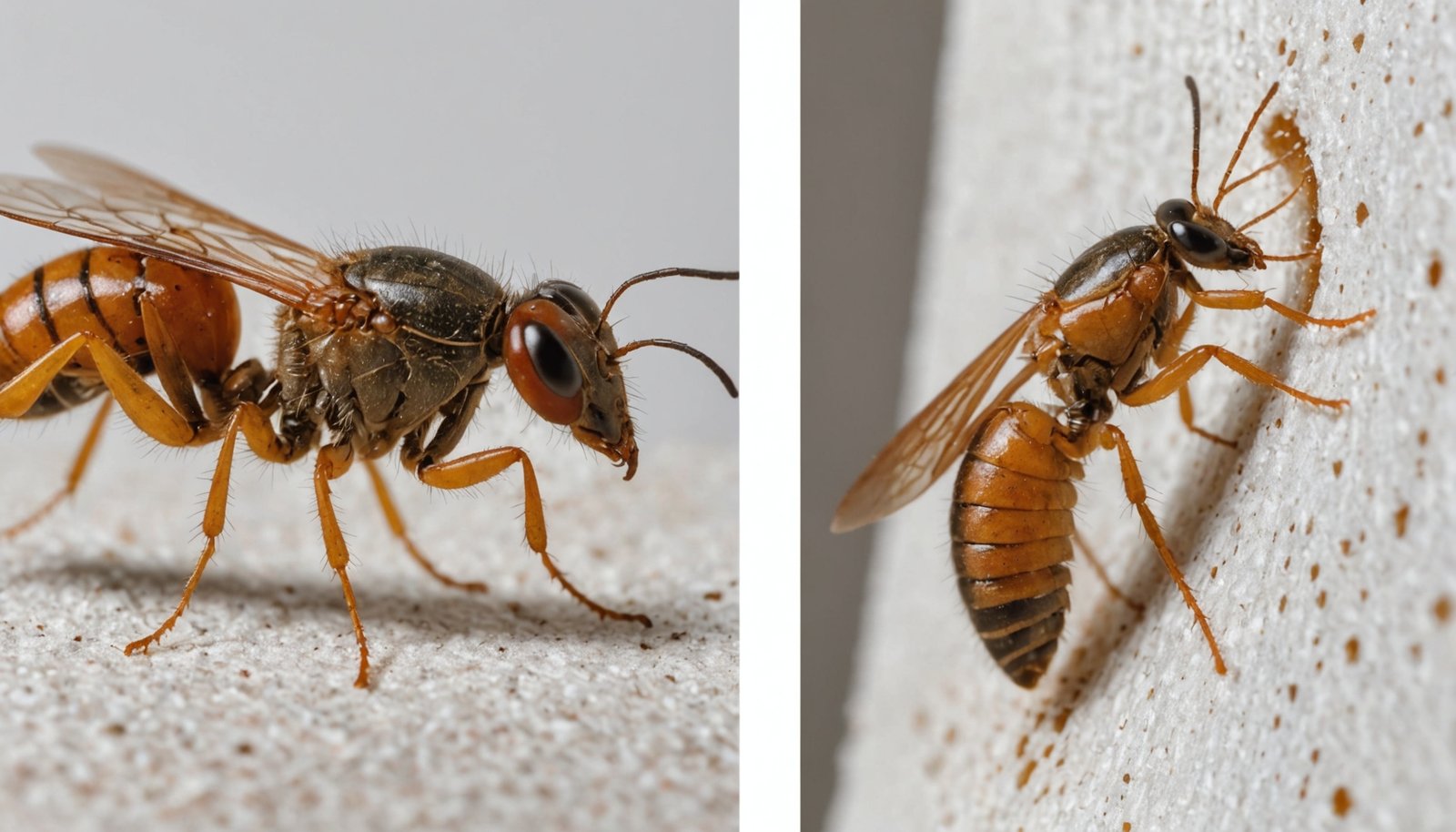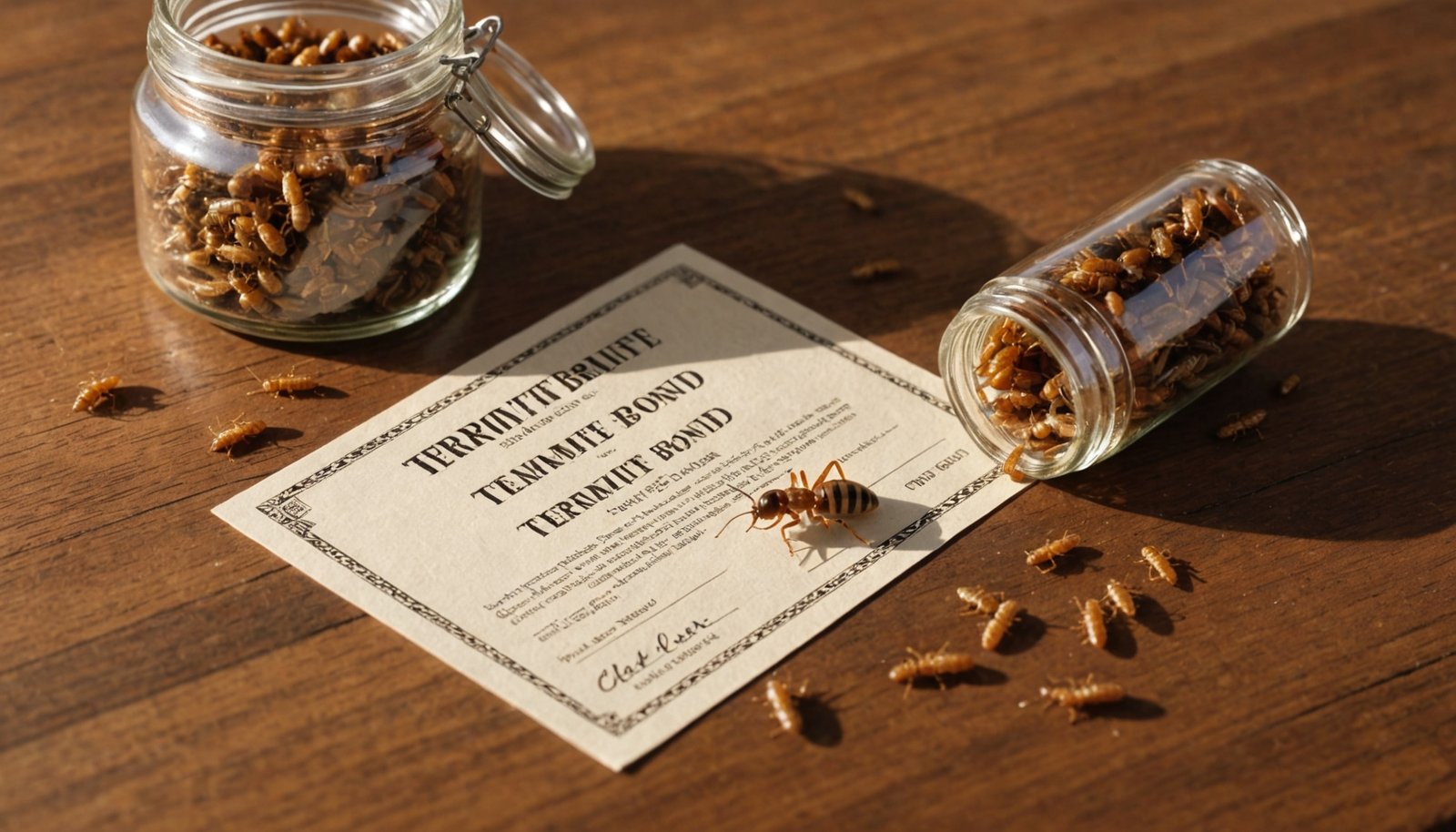Termite Bond Vs Warranty: What’s Worth Paying For?
Choose a termite bond if you want proactive prevention, scheduled inspections, and surety-backed retreatment—some even include repairs. Pick a warranty for budget-friendly coverage after initial treatment; retreat-only is cheapest (around $495), while retreat-and-repair costs more but caps repair bills, often $6–$9 per linear foot. In high-risk regions or older homes, repair coverage is worth it. New builds and low-risk areas may be fine with retreat-only. You’ll see how location, age, and budget guide the best choice next.
Key Takeaways
- Bonds emphasize prevention, scheduled inspections, and guaranteed retreatment; warranties mainly ensure retreatment and sometimes limited repairs after an active infestation.
- If you want repair protection, choose a retreat-and-repair option; it costs more but caps out-of-pocket expenses in termite-prone areas.
- Retreat-only coverage is the budget pick (often from ~$495) but won’t pay for fixing termite damage.
- Bonds may include surety-backed financial reserves, while warranties rely on the company’s insurance and stated repair limits.
- New or high-risk homes benefit from bonds or repair-inclusive plans; lower-risk or budget-conscious owners can opt for retreat-only with regular inspections.
What a Termite Bond Covers and How It Works

Think of a termite bond as a protective contract that keeps termites from turning your home into their next meal. You enter a legal agreement with a pest control company to prevent and manage termite risks that insurance typically doesn’t cover. The bond sets clear terms, costs, and services tailored to your home’s size, location, and construction.
A termite bond is your legal shield against costly, uncovered termite damage and risk.
Here’s what it covers: an initial treatment to create a barrier, scheduled services, and annual inspections to spot activity early. If termites show up, a retreatment guarantee kicks in, so the company treats affected areas at no extra charge. Typical duration ranges from 1 to 10 years, and you’ll need to renew to maintain coverage.
Bonds emphasize prevention and continuity—regular monitoring, periodic renewals, and adjustments based on risk factors like past infestations or high-pressure regions.
You can choose between retreat-only bonds or retreat-and-repairs bonds, with regional variations and service level agreements detailing frequency and scope.
What a Termite Warranty Covers and How It Works

A termite warranty is a service agreement that keeps coverage in force after your initial treatment, so you’re protected if termites show up again. You activate it by registering after treatment or inspection, then keep it active with annual renewals. Renewals typically include a fee, an inspection, and sometimes the option to expand coverage. If you don’t renew, coverage lapses. Protection against termites is beneficial for homeowners because early detection and treatment can prevent extensive damage.
You can get a warranty for new builds pretreated during construction, existing homes after post-construction services, and commercial or multi-unit properties through tailored plans. Many warranties include annual inspections and ongoing monitoring. If termites are detected, the company must retreat at no extra cost. Some plans also pay for repairs, often up to $250,000 or more; others cover retreatment only. Transferability varies, so check terms.
Expect inspection reports with photos, approved treatment products, and owner responsibilities that prevent voiding coverage. Backing by insurers and lifetime options add financial assurance.
Key Differences in Coverage, Cost, and Risk

Now that you know how a termite warranty works, it’s time to compare it with a termite bond on what matters most: coverage, cost, and risk.
Bonds usually bundle prevention, inspections, and retreatments; some add repairs. Warranties are service agreements, often insurer-backed, that cover retreatment and sometimes repairs up to stated limits. Neither promises termites won’t return; both promise action if they do. In general, termite insurance focuses on paying for damage repairs, while warranties and bonds emphasize prevention and treatment services.
Bonds bundle prevention, inspections, and retreatments; some include repairs. Warranties cover retreatment, sometimes repairs, with stated limits.
On cost, repair-inclusive options (bond or warranty) run higher than retreat-only versions. Annual bond fees typically fund inspections, treatments, and service guarantees. While pricier upfront, repair coverage can save you from large, surprise repair bills. Market availability matters too—retreat-only plans are easier to find than repair-inclusive ones.
For risk, surety-backed bonds provide a dedicated financial reserve. Warranties rely on company insurance with variable limits.
Repair-inclusive coverage reduces your out-of-pocket exposure, especially in termite-prone areas or older, previously infested homes. Retreat-only shifts repair risk to you, which can be expensive if damage occurs.
Retreat-Only vs. Retreat-and-Repair: Which Fits Your Home
Which coverage makes sense for your home and budget: retreat-only or retreat-and-repair?
Retreat-only warranties pay for additional treatments if termites return after the initial service. You won’t get help with repair bills, but you’ll keep treatments coming without extra charges. They’re commonly offered, simpler to manage, and often start around $495, making them a budget-friendly way to maintain control. Savannah’s climate makes termite pressure high year-round, so regular inspections and warranties are vital for early detection and prevention.
Retreat-and-repair warranties cover both retreatment and the cost to fix termite damage. You’ll pay more—often priced by perimeter length, commonly $6–$9 per linear foot—but you gain financial protection if damage occurs. Policies usually include coverage caps (from $25,000 up to $1,000,000 in premium plans) and exclude pre-existing damage.
Consider your risk tolerance and what you want to insure. Average repair bills hover near $3,000, but severe cases reach tens or hundreds of thousands. If you’d rather avoid that exposure, repair coverage delivers peace of mind.
Either way, regular inspections and tailored treatments—liquid barriers or bait stations—keep protection active.
How to Choose Based on Location, Home Age, and Budget
Choosing between retreat-only and retreat-and-repair gets clearer when you factor in where you live, your home’s age, and what you can spend each year.
In high-risk regions like Florida and the Gulf Coast, multiple species and sandy soils push you toward full repair coverage, semi-annual inspections, and providers that handle local soil/water-table challenges. Because costs typically range from $500–$2,500, factor total annual spend against your risk profile when selecting coverage.
In lower-risk areas, retreat-only may be enough if inspections stay consistent and species coverage matches local threats.
New builds can start with new construction bonds during the build, then convert, cutting lifetime risk by about 70%.
Older or wood-framed homes often need detailed inspections, proof of completed repairs for any existing damage, and higher-tier coverage.
Budget matters: retreat-only can start near $495, while full repair costs 20–30% more but can prevent $8,000–$12,000 repair bills.
- Compare at least three local providers and exclusions.
- Confirm coverage for subterranean, Formosan, and drywood species.
- Weigh annual renewals against repair risk.
- Prefer transferable bonds in active real estate markets.
Frequently Asked Questions
How Do Transfers Work When Selling a Home With a Bond or Warranty?
Transfers usually require you to notify the pest company, pay a small transfer fee, and keep coverage active through closing.
You’ll provide the contract and latest inspection/WDIR to the buyer. The buyer must accept the terms, continue annual inspections, and renew on schedule; missing them can void coverage.
Confirm whether your bond or warranty is transferable, if damage repair is included, and get written confirmation of transfer to avoid gaps or added treatment costs.
What Contract Clauses Commonly Void Coverage or Lead to Denial?
You’ll commonly see clauses voiding coverage for missed inspections, skipped retreatments, poor maintenance, or late reporting of activity.
Unauthorized structural changes, adding wood or landscaping near the home, or damaging bait systems can nix repair benefits, especially if you don’t notify the company.
Pre-existing infestations or damage are excluded. Nonpayment, dollar caps, and using non-approved contractors also trigger denials.
Treatments by others, incomplete documentation, or misrepresentation will likewise kill claims.
How Do Provider Financial Ratings Affect Claim Reliability?
They directly influence how reliably you’ll get paid.
Higher-rated providers have the capital and reserves to honor claims promptly and fully, boosting your odds of quick repairs and fewer disputes.
Lower-rated companies may delay, underpay, or deny claims, and can even cancel coverage or fail during infestations.
With bond-backed contracts, the surety’s strength matters; with warranties, the insurer’s rating does.
Verify ratings, regulatory compliance, and transparency to protect yourself.
Are Subterranean, Drywood, and Formosan Termites Treated Differently?
Yes. You treat subterranean, drywood, and Formosan termites differently.
For subterranean termites, you’ll use soil-applied liquids or bait stations and fix moisture and wood-to-soil contact.
For drywood termites, you’ll often need whole-structure fumigation or targeted injections, plus sealing entry points.
For Formosan termites, you’ll combine aggressive liquid barriers and baits, monitor frequently, and address moisture.
You’ll also schedule regular inspections and act quickly when you see mud tubes, pellets, or swarmers.
What Documentation Should I Keep for Future Resale or Claims?
Keep original treatment records, warranty certificates, and contracts.
Save annual inspection reports, renewal receipts, and any maintenance logs (moisture control, wood-to-soil fixes).
Retain all inspection and clearance letters, damage assessments, repair invoices, and photo/video evidence.
Keep correspondence with your pest company and documentation of treatment protocols.
Store disclosure forms given to buyers and proof of transferable warranties or service agreements.
Organize everything by date so you can validate coverage, file claims, and support resale.
Conclusion
You don’t need to overpay—you need the right fit. If you want basic protection and lower annual costs, a retreat-only warranty can work. If repair bills would wreck your budget, a retreat-and-repair bond’s worth the premium. Weigh your risk: humid climates, older or wood-heavy homes, and past infestations favor stronger coverage. Compare terms, exclusions, and transferability, and get multiple quotes. Choose the plan that matches your home, location, and risk tolerance—and sleep easier.

